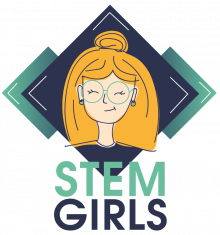
Original photo by Manir Dhabak via Wikimedia Commons, Attribution 4.0.
A downloadable version of this lesson is available here:
The United Nations (UN) has established 17 Sustainable Development Goals (SDGs) that broadly address the critical interdependencies between human well-being and environmental health. These goals include such human-centered priorities as poverty, hunger, education, job opportunity, and gender equality, as well as environmental concerns like climate change, freshwater quality and quantity, and the health of aquatic and terrestrial ecosystems. UN SDG #5, Gender Equality, aims to empower women and girls with education, access to family planning resources, reductions in domestic violence, and gains in political representation. These issues of basic human rights also resonate with more sustainable environmental outcomes. Inequality negatively affects women’s ability to limit the number of children they have; to improve food and habitat quality for their families; and to pursue more sustainable methods of food production. This lesson uses a recent literature review by Call and Sellers (2019) to detail the most effective women’s empowerment initiatives to achieve more sustainable methods in the three environmental occupations of agriculture, fishing and aquaculture, and forestry. Learners will investigate the challenges to sustainable development in the three sectors and develop innovative initiatives with gendered needs in mind. Their learning may be extended to develop a formal grant proposal for a sponsoring organization.
- Discuss global problems and histories that degrade women’s status compared to men.
- Detail specific challenges to gender equality within agriculture, fisheries, and forestry.
- Research potential solutions with proven results or new innovations within a given sector.
- Develop a brief pitch for a new initiative with gender needs in mind, with the option to develop this initiative into a full grant proposal.
Science, technology, engineering, and mathematics (STEM) majors and learners in other fields may be aware of the gender biases in culture, recruitment, and retention that have caused the historic underrepresentation of women in many academic fields. There have been efforts to level the field and encourage women to pursue careers regardless of historical biases. For 5 minutes, ask learners to share their experiences of effective gender need-based initiatives that supported their studies. How could such support help them design inclusive participation of women in male-dominated sectors in the developing world?
Sustainable Development: Gender Equality and Environmental Health One 75-minute class with optional extension)
-
As preparation for class, have learners read and take notes on the article by Call and Sellers (2019), paying special attention to the highlighted portions. Learners should also review the 17 UN Sustainable Development Goals for an overview of the areas of action and intersections among these broad goals. They should pay special attention to SDG #5, Gender Equality, which includes an “overview,” “targets and indicators,” and “progress and info.”
DocumentCall & Sellers 2019 – Highlighted.pdf (663.55 KB) -
(10 min.)Review the major concepts of gender equality in the Call and Sellers paper using these lesson PPT slides.
Document -
(5 min.) Divide the assembly into three working groups: Agriculture; Fishing and Aquaculture; Forestry. Larger gatherings may wish to form multiple working groups for each sector so that groups are kept to a workable number, between three to six individual learners.
-
(15 min.) Once groups are formed, begin a quick full-group discussion that spans all three sectors. Ask learners:
What are some key problems or challenges that degrade women’s status? For example, the problems of unequal power structures; discrimination and negative stereotypes; poverty; sexual and domestic violence; and political and historical legacies like patriarchy, religion, and colonialism are all factors that can limit women’s ability to participate as equal citizens. Intersectionality, where women are further marginalized based on multiple aspects of their identity (race, class, religion, sexuality), is inherent to anti-female discrimination.
What proven interventions empower women to make choices that improve their lives and their families’ lives? Critical interventions with proven success in elevating women across sectors include: educating girls and boys on gender equality; providing family planning information and contraceptives; rebalancing the gender-biased duties of childcare and household maintenance; providing gender-targeted education and financing for adopting sustainable methods; elevating women into visible positions of leadership and influence; and requiring benchmarks for including underrepresented groups in leadership positions.
What types of organizations are most effective in implementing programs that empower women and girls? The types of organizations with records of successful implementation include mega-partnerships like the World Bank Group; government from international (e.g., UN) to national to regional levels; specialized non-profit organizations (NPOs); private philanthropists and grant-makers.
-
(30 min.) From this common ground, groups are now free to specialize in their sector to design initiatives that support gender equality in the context of sustainable methods of food production. Learners can refer back to Call and Sellers for specific in-country examples for each sector. It may be most effective to ask each group to choose a target country for the implementation of their ideas. Have each group design one initiative that could be implemented by 2026, with initial results by 2030. (Each initiative should identify specific goals, implementation methods, targeted groups, and a sponsoring organization.
The Agriculture group may focus on the following areas:
- Agricultural technology: Advanced seeds, methods, use of fertilizer
- Climate-smart agriculture: No-till planting, intercropping, grass strips, soil bunds, landscaping to reduce runoff
- Land access, ownership, and financing that targets women
- Farmers’ organizations: women’s leadership and recruitment
The Fishery and Aquaculture group may focus on the following areas:
- Gender equality in access and sustainable harvesting from Marine Protected Areas (MPAs)
- Women-targeted training, financing, and technical support for aquaculture
- Aquaculture designs and species that work well with small-scale local production
- Fishery and aquaculture organizations: Women leaders with opportunities targeted for women fishers, particularly access to large-scale operations dominated by men
The Forestry group may focus on the following areas:
- Challenging traditional gender roles that prevent women from timber and hunting
- Enhancing traditional women’s roles of sustainable forest use in gathering wild food
- Forest governance: achieving a critical mass of women participants and leaders
- Educating and empowering women in programs that pay to preserve ecosystem services to reduce deforestation and emissions
-
(10 min.) With the remaining class time, reconvene the full assembly and ask each group to provide a quick pitch for their new initiative, including specific goals, methods of implementation, targeted group, oversight and sponsoring organization (3 min. each).
-
As an optional extension, invite groups to collaborate on developing a formal grant proposal in which they identify a target sponsor and write formal sections including: Cover Letter, Table of Contents, Executive Summary, Introduction to the Program, Statement of the Problem, Program Description (including goals, objectives, and specific methods), Methods for Program Evaluation, Budget and Timeline for Implementation, Future Funding & Sustainability, Conclusion, Appendices and Supplementary Material.
-
Overcoming gender inequality for climate resilient development
This paper focuses on women’s vulnerability to hazards caused by climate change. The authors find that rapid improvements in gender inequality are possible under a near-term sustainable development scenario. By 2030, the share of girls growing up in countries with the highest gender inequality could be reduced to about 24% compared to about 70% today. Under less optimistic scenarios, gender inequality may persist throughout the 21st century. Their results show the importance of incorporating gender in climate-impact scenarios and underscore the relevance of addressing gender inequalities in policies aiming to foster climate-resilient development.
Andrijevic, M., Crespo Cuaresma, J., Lissner, T. (2020). Overcoming gender inequality for climate resilient development. Nature Communications, 11, 6261. https://doi.org/10.1038/s41467-020-19856-w
-
Gender, health and the 2030 agenda for sustainable development
This paper explores the interlinkages among SDGs in relation to gender equality, with a specific focus on women’s health. Across three domains (social determinants, health behaviors, and health systems), the authors explore the links between gender, health, and other SDGs. They propose concerted and collaborative actions across the interlinked SDGs to deliver health equity, health, and well-being for all, as well as to enhance gender equality and women’s empowerment.
Manandhar, M., Hawkes, S., Buse, K. et al. (2018). Gender, health and the 2030 agenda for sustainable development. Bulletin of the World Health Organization, 96, 644–653. http://dx.doi.org/10.2471/BLT.18.211607
-
Promoting gender equality across the sustainable development goals
This paper conducts an in-depth analysis of how gender equality interacts with the other SDGs, proposing a new framework of analysis for SDGs 1, 4, 11, 12, 14 and 16. The authors assess the emphasis on gender issues across all the other 16 SDGs in addition to gender equality through a literature review and case study analysis. They illustrate specific areas where further actions may be necessary and how policymakers can approach gender awareness in coordination with other SDG efforts.
Leal Filho, W., Kovaleva, M., Tsani, S. et al. (2022). Promoting gender equality across the sustainable development goals. Environment, Development and Sustainability. https://doi.org/10.1007/s10668-022-02656-1
